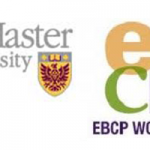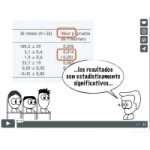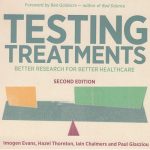
Confidence Intervals – CASP
The p-value gives no direct indication of how large or important the estimated effect size is. So, confidence intervals are often preferred.
| 0 Comments | Evaluated
Know Your Chances
This book has been shown in two randomized trials to improve peoples' understanding of risk in the context of health care choices.
| 0 Comments | Evaluated
McMaster Evidence-Based Clinical Practice Workshop Resources – Therapy module
McMaster Evidence-Based Clinical Practice Workshop – Therapy module.
| 0 Comments
McMaster Evidence-Based Clinical Practice Workshop Resources – Systematic review module
McMaster Evidence-Based Clinical Practice Workshop – Systematic review module.
| 0 Comments
Basic statistics for clinicians: 3. Assessing the effects of treatment: measures of association
Assessing the effects of treatment: measures of association.
| 0 Comments
Making the most of the evidence in education
A pamphlet to guide people using research evidence when deliberating about educational policies.
| 0 Comments
Beginners guide to interpreting odds ratios, confidence intervals and p values
A tutorial on interpreting odds ratios, confidence intervals and p-values, with questions to test the reader’s knowledge of each concept.
| 0 Comments
P Value in Plain English
Using simple terms and examples, this blog explains what p-values mean in the context of testing hypotheses in research.
| 0 Comments
Making sense of randomized trials
A description of how clinical trials are constructed and analysed to ensure they provide fair comparisons of treatments.
| 0 Comments
Statistical Significance – CASP
In a well-conducted randomized trial, the groups being compared should differ from each other only by chance and by the treatment received.
| 0 Comments
P Values – CASP
Statistical significance is usually assessed by appeal to a p-value, a probability, which can take any value between 0 and 1 (certain).
| 0 Comments
Making sense of results – CASP
This module introduces the key concepts required to make sense of statistical information presented in research papers.
| 0 Comments
Los intervalos de confianza en investigación
¿Para qué sirven los intervalos de confianza en los estudios de investigación?
| 0 Comments


Interpreting 95% Confidence Intervals
Gilbert Welch’s 9-min video on how 95% confidence intervals relate to p values.
| 0 Comments

Significant Others
Statistical significance does not always mean meaningful or practical significance.
| 0 Comments
False Precision
The use of p-values to indicate the probability of something occurring by chance may be misleading.
| 0 Comments
P-values and the role of chance
Gilbert Welch’s 10-min video on p-values and assessing the likelihood that a difference between treatments is due to chance.
| 0 Comments
Understanding Confidence Intervals
A 4-min video explaining the concept of confidence intervals and how they are calculated, with helpful diagrams and examples.
| 0 Comments
Mixed Messages about Statistical Significance
A webpage explaining the difference between statistical and practical significance.
| 0 Comments
Type I and Type II errors, and how statistical tests can be misleading
Gilbert Welch’s 12-min video explaining Type I and Type II errors, and how statistical tests can be misleading.
| 0 Comments
Reporting results of studies
Dr Chris Cates' article discussing how to report study results, with emphasis on P-values and confidence intervals.
| 0 Comments
Viva la Evidence!
A brilliant song and video by James McCormack explaining the basics of evidence-based medicine.
| 0 Comments
What does the Cochrane logo tell us?
This video and animated slide presentation prepared by Steven Woloshin shows how the Cochrane logo was developed, and what it tells us.
| 3 Comments
วิธีการรักษา “แตกต่างอย่างมีนัยสำคัญ” แปลว่าอะไร
คำถามนี้ตอบยาก เพราะ “ความแตกต่างที่มีนัยสำคัญ” อาจแปลได้หลายอย่าง อย่างแรก คือ ความแตกต่างที่สำคัญต่อผู้ป่วยจริง ทว่าเมื่อผู้เขียนรายงานวิจัยกล่าวว่าวิธีการรักษา “แตกต่างอย่างมีนัยสำคัญ” พวกเขามักหมายถึง “ความแตกต่างทางสถิติ” ทั้งนี้ “ความแตกต่างที่มีนัยสำคัญทางสถิติ” อาจไม่ได้ “มีนัยสำคัญ” ในความหมายที่ใช้กันทั่วไป “ความแตกต่าง” ระหว่างวิธีการรักษา “ที่มีนัยสำคัญทางสถิติ” ซึ่งก็คือ […]
| 2 Comments
การประเมินผลจากความบังเอิญในการตรวจสอบอย่างเที่ยงธรรม
ผลจากความบังเอิญอาจทำให้เกิดความผิดพลาดได้ 2 ลักษณะในการแปลผลการเปรียบเทียบวิธีการรักษาอย่างเที่ยงธรรม คือเราอาจสรุปพลาดว่าวิธีการรักษาให้ผลการรักษาต่างกัน ทั้งที่จริงไม่ต่าง หรือกลับกัน ยิ่งสนใจสังเกตผลการรักษาจำนวนมากเท่าใด แนวโน้มที่เราจะเข้าใจผิดเช่นนี้ก็ยิ่งต่ำลงเท่านั้น การหา “ความแตกต่างที่แท้จริง” ระหว่างวิธีการรักษาต่างๆ นั้นเป็นไปไม่ได้เลย เพราะไม่อาจเปรียบเทียบวิธีการรักษาในคนทุกคนที่เป็น หรือจะเป็นโรคนั้น การศึกษาจึงต้องพยายามคาดเดาให้ใกล้เคียงที่สุดแทนว่าความแตกต่างที่แท้จริงน่าจะเป็นเท่าไร ความน่าเชื่อถือของความแตกต่างที่ประมาณได้มักแสดงในรูป “ช่วงความเชื่อมั่น (confidence interval)” โดยระบุช่วงที่น่าจะครอบคลุมความแตกต่างที่แท้จริง […]
| 4 Comments
บทที่ 7 คำนึงถึงผลจากความบังเอิญ
ประเด็นสำคัญ ต้องมีการพิจารณา โดยประเมินว่าเชื่อมั่นคุณภาพและจำนวนของหลักฐานที่มีได้เพียงใด ความบังเอิญและกฎว่าด้วยจำนวนมาก การป้องกัน (และการแก้ไขความลำเอียงที่ไม่ได้ป้องกันไว้) ทำให้เกี่ยวกับผลเชื่อถือได้ หากการตรวจสอบอย่างเที่ยงธรรมขาดองค์ประกอบเหล่านี้ ต่อให้ปรับผลจากการวิจัยอย่างไรก็ไม่อาจแก้ปัญหารวมถึงผลกระทบจากปัญหาที่อาจคร่าชีวิตได้ (ดูบทที่ 1 และ 2) และแม้เมื่อลดความลำเอียงได้ด้วยขั้นตอนต่างๆ แล้ว เราก็ยังอาจถูกความบังเอิญหลอกเอาได้ ทุกคนรู้ว่าถ้าโยนเหรียญซ้ำๆ จะออกหัวหรือก้อย “ติดกัน” 5 […]
| 1 CommentNo Resources Found
Try clearing your filters or selecting different ones.
